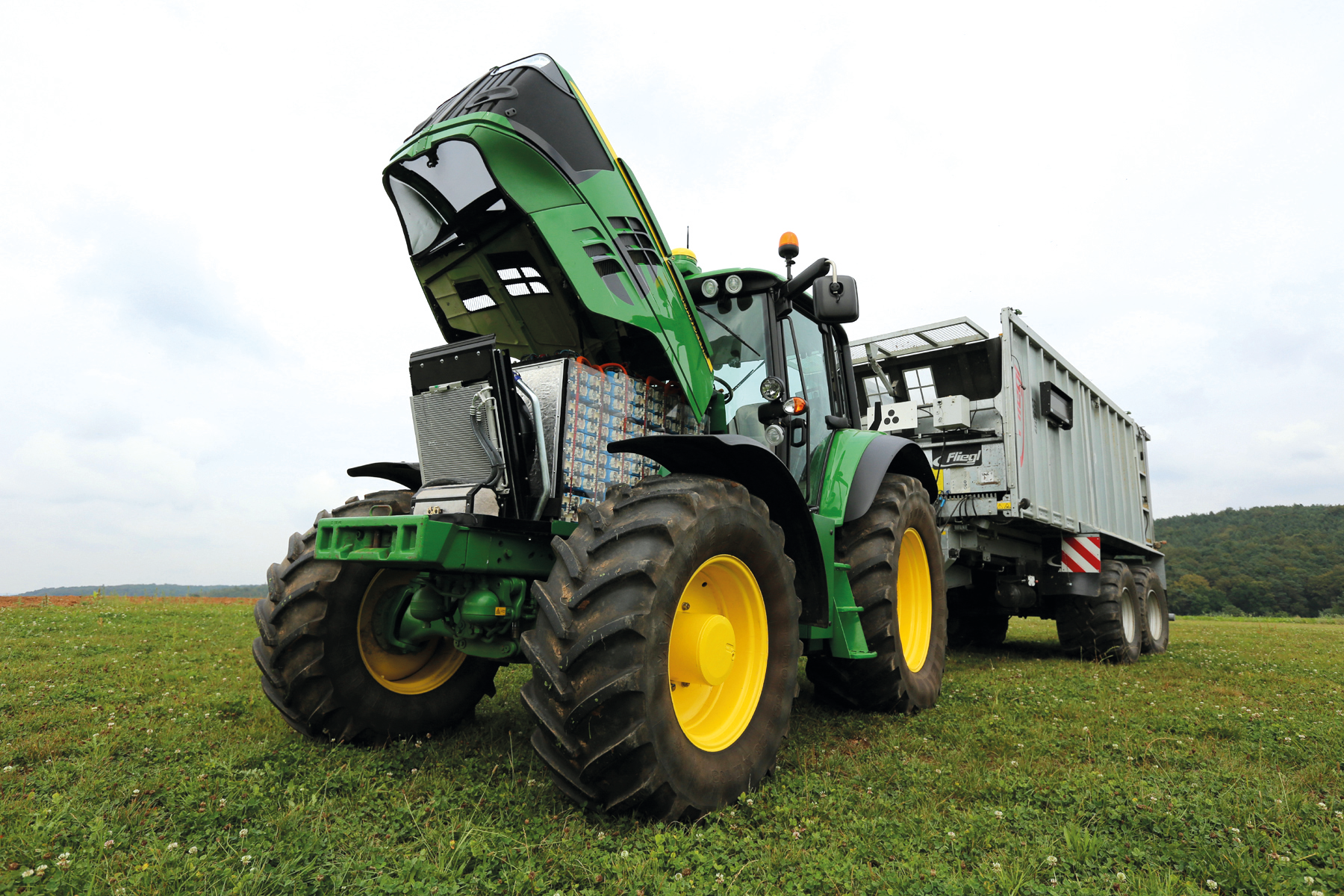
Green and yellow are arguably the second-most American set of colors, behind red, white and blue, of course. This rings true particularly for those who operate John Deere machinery on a daily basis, as the growth of our nation is supremely dependent on the country’s agriculture industry, including the good folks who support it.
Technology in recent years has been the catalyst for the boom and bust of many industries. In the past decade or so, advancements in farming technology have primarily been focused on automation and precision, but with the automobile industry moving towards electric vehicles, the ag-industry is following suit.
John Deere showcased the first, fully battery-powered tractor in 2017 at SIMA, an international agribusiness tradeshow in Paris. This technological innovation was given a ‘special mention’ as it truly the first of its kind. Nicknamed SESAM, for Sustainable Energy Supply for Agricultural Machinery, this all-electric tractor is modeled after John Deere’s 6r series tractors.
In a press release by John Deere, SESAM is said to have all of the same “features and functionality of a ‘conventional’ tractor while offering the benefits of electric power.” This emissions-free tractor runs at a lower noise level than other traditional tractors and is operated using two independent electric motors. The electrification of this tractor simplifies the moving parts and thus, greatly reduces the need for maintenance.
These two motors power an adapted DirectDrive transmission, producing 130 kilowatts of continuous power with a peak output of 400 horsepower, according to Farm-Equipment.com. The website also affirms that the tractor takes 3 hours to fully charge and can run up to 4 hours in the field with speeds ranging from 2 to 30 mph. As a comparison, the Tesla model 3 may have a capacity of up to 75 kilowatt hours of battery storage (kWh), providing a range of about 310 miles. The SESAM has a capacity of 130 kWh with a range of about 34 miles, which means that this tractor uses a lot more electricity in a shorter period of time.
In order for the SESAM to take off, the battery capacity will need to expand to support the sun-up to sun-down longevity of farm work. In fact, the President and CEO of Autonomous Tractor Corporation, Kraig Schulz, purported that a 200 horsepower electric tractor would hypothetically need about 1,500 kWh of batteries to complete a full day’s work. As energy storage technology continues to advance, it’s only a matter of time before John Deere manufactures a tractor that can meet this need.
Although SESAM’s battery technology may not yet be practical for a full day of farming, the all-electric tractor is a very exciting development for the agriculture industry. This is one of many future steps in the direction of electrifying agricultural machinery and integrating this equipment with renewables. As the press release stated, “The SESAM tractor is a major part of John Deere’s vision of the energy-independent farm of the future.”
This push towards electrification of farm machinery in lieu of using fossil fuels directly supports the beneficial electrification movement. This concept, known fully as “environmentally beneficial electrification,” is gaining traction among a growing number of groups in the U.S. including local electric cooperatives. Frequently promoted as a means to reducing greenhouse gases and helping the environment, beneficial electrification also helps consumers by providing products that are cleaner, quieter and easier to maintain. John Deere’s SESAM tractor does just that.
Kaley Lockwood writes on cooperative issues for the National Rural Electric Cooperative Association, the Arlington, Va.-based service arm of the nation’s 900-plus consumer-owned, not-for-profit electric cooperatives.




